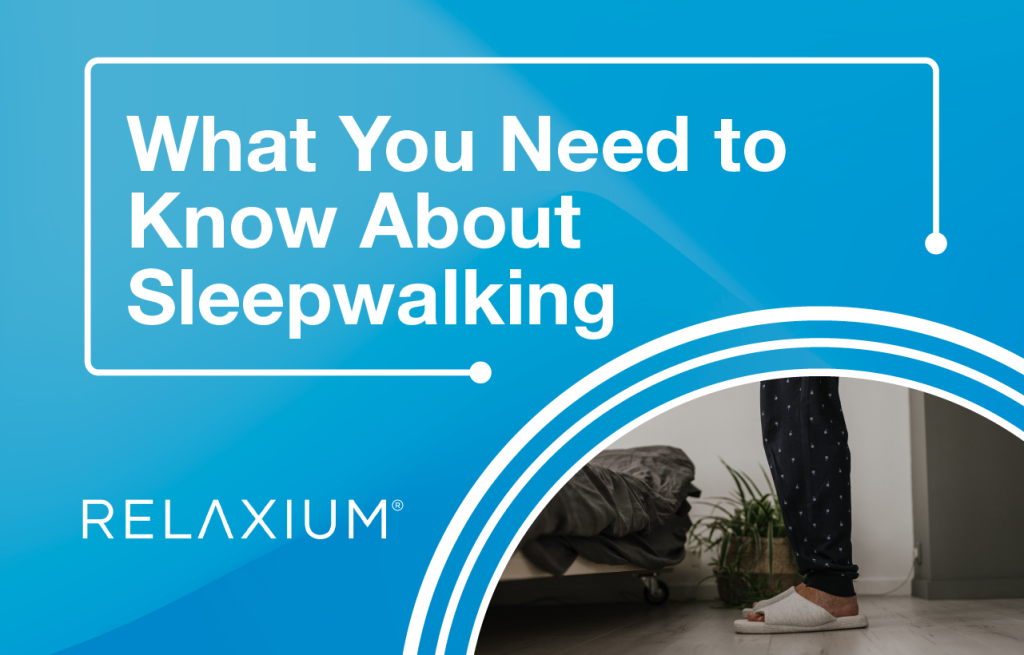Sleep disorders of all kinds interfere with your sleep. All can become dangerous if prolonged, or not changed. Sleepwalking is a behavior disorder that happens during sleep and it is important to know how to continue living life and how to avoid it.
What exactly is sleepwalking?
As previously mentioned before, sleepwalking is a behavior disorder that used to be called somnambulism. It is categorized as a type of sleep disorder referred to as parasomnia. Parasomnias are the in-between of sleep being awake. Sleepwalking involves waking up and performing tasks or acting in a certain behavior, all while still being asleep.
Normal sleep patterns involve a repeated phase of eye movement, known as the REM cycle. You begin in deep, non-REM sleep, then you proceed to REM sleep after the first 90 minutes of going to bed. In the case of sleepwalkers, in those first 90 minutes, that is when sleepwalking typically occurs.

Who is typically affected by sleepwalking?
While it is more common in children, adults are also susceptible to sleepwalking. Typically what triggers sleepwalking is family history, sleep deprivation, or you are more likely to experience continuous awakenings at night.
Some other factors that can lead to sleepwalking are as follows:
- Medications
- Alcohol
- Injuries to the brain
- OSA (Obstructive Sleep Apnea)
- RLS (Restless Leg Syndrome)
- Stress
- Illness or fevers
- Anxiety
- Migraines
29% of children in the world deal with sleepwalking. Typically, children who sleepwalk grow out of it by the early ages of teenhood. 4% of adults are affected by sleepwalking.
What are the symptoms of sleepwalking?
Symptoms for sleepwalking are some of the following:
- Open eyes with a glassy appearance
- Blank face
- Incoherent speech
- Minimal response, physically and verbally
- Zero recollection of what happened upon waking up
These are all signs that can lead to the diagnosis of sleepwalking. Something to note is that walking is not the only action sleepwalkers can endure. Running, getting dressed, engaging in sexual behavior, urination in inappropriate places and other physically demanding activities can all be done while sleepwalking.
Episodes can last from a few seconds to half an hour. Most last around 10 minutes or so.

How could sleepwalking be potentially dangerous?
Movement while being subtly conscious but also asleep can lead to very real and very negative consequences. Injuries are the biggest concern. If for example, a person is sleepwalking and is unaware of stairs, there is a possibility of the person falling and seriously injuring themselves; worst case scenario hitting their heads.
Sharp objects around the place they sleep can also be a serious risk. Easily colliding or tripping into something is entirely possible considering you are not aware of your surroundings when sleepwalking.
There is a widely recognized sentiment that you should not wake a sleepwalker. It is said that if you do, they may be at risk for heart attack, brain injury, death or even harm to the person waking them up. This is not true. In most all cases, the best option is to just try to lead the person back to bed.
If they are woken up, or you must wake them up, generally there may be feelings of confusion, embarrassment, or anger. This is just because they were previously unaware of what has been happening around them, they feel that they are being disturbed at that moment. There is no need to worry about physical consequences once being awoken.
Avoid waking the person, but if necessary for their safety, you need not fear any serious physical repercussions.
How can I help myself or a loved one who sleepwalks?
As we mentioned before, injury is a high risk when it comes to sleepwalking. With this in mind, there are a few ways to help someone from physically injuring themselves.
- Keep any sharp objects or weapons away, locked up, and away from reach
- Close windows and doors with a latch
- Check for any tripping hazards on the ground
- In extreme circumstances, it may be valuable to have motion sensors or alarms
Connecting back to symptoms that can cause sleepwalking, working on conditions such as Restless Leg Syndrome or Obstructive Sleep Apnea may help in coping with the level of severeness. Consider medications taken, and understand not all medications have a side effect of sleepwalking, talk this over with your doctor.
Track when the sleepwalking typically occurs. By doing this you may be able to predict when it may happen, which will make helping them get back to bed without injury much easier.
Encourage those dealing with sleepwalking to make some life changes. As mentioned previously, alcohol can be a factor that can impact your sleeping habits. Encourage your loved one to stray away from a drink before bed.
Relaxium is a company that understands the struggle of sleep disorders/behaviors. Allow us to be a resource to try to help you relax. Relaxium Calm is a natural supplement that was created to help aid with stress and mood. A supplement such as this may help ease into your journey of peaceful sleep.
Work with what you can
Luckily, in most cases, sleepwalking is a disorder that is possible to grow out of. This is not to discourage anyone who does currently go through this, but rather to offer solutions. It is important to be informed about disorders such as this; especially those that can lead to physical threats. We hope this offers an informational solution for those who are affected by sleepwalking.
To restful and healthy days ahead.
The Relaxium Team
*These statements have not been evaluated by the Food & Drug Administration. This product is not intended to diagnose, treat, cure, or prevent any disease.
Sources:
https://www.sleepfoundation.org/parasomnias/sleepwalking
https://pubmed.ncbi.nlm.nih.gov/23450499/
https://jamanetwork.com/journals/jamapediatrics/fullarticle/2281574
https://my.clevelandclinic.org/health/diseases/14292-sleepwalking

